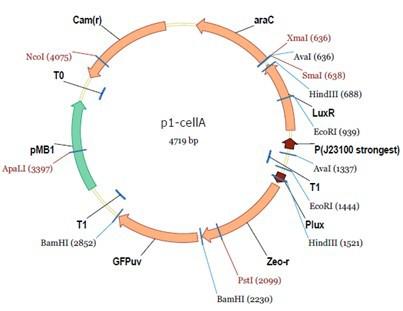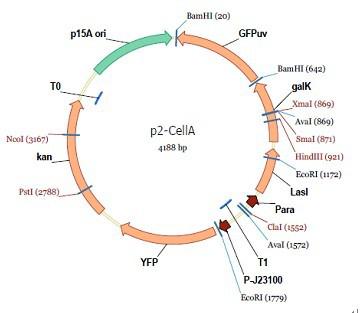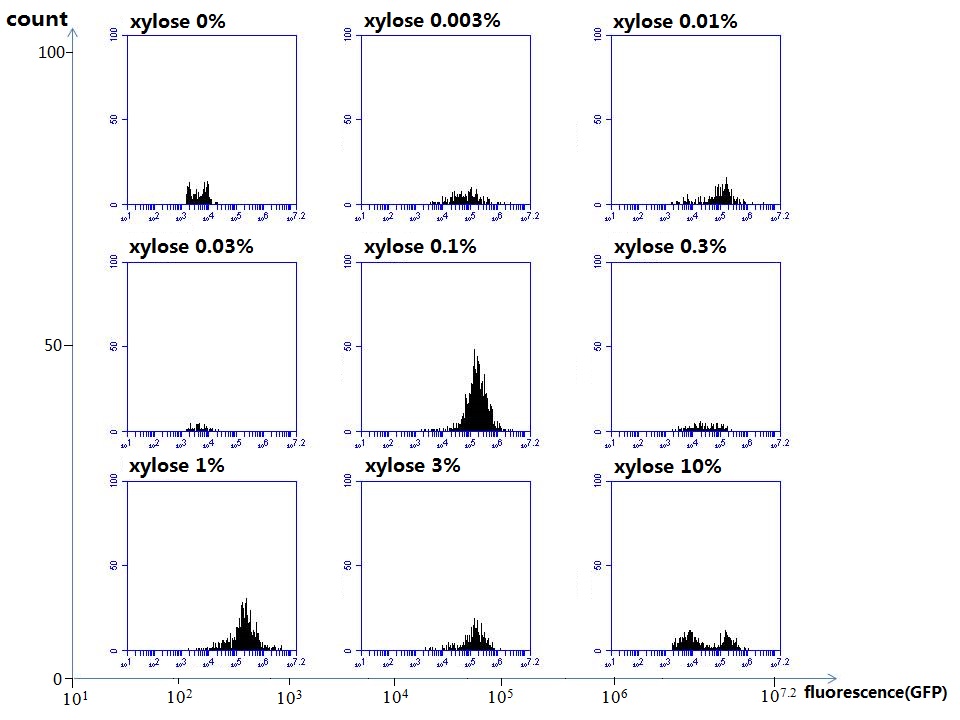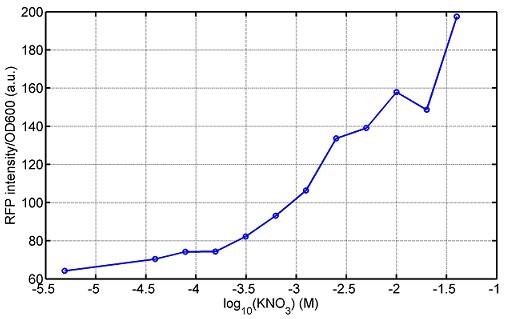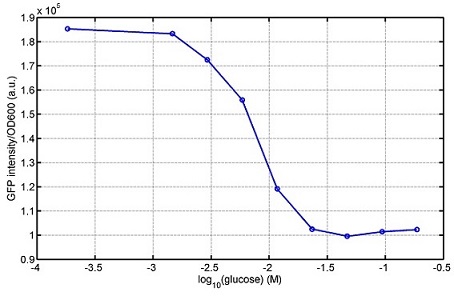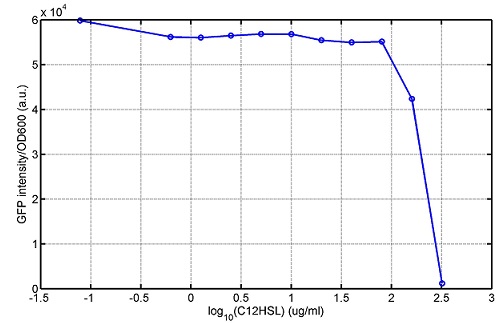Team:SUSTC-Shenzhen-A/Project
From 2013.igem.org
(Difference between revisions)
(→our design) |
|||
| Line 38: | Line 38: | ||
[[File:designasustc.jpg]] | [[File:designasustc.jpg]] | ||
[[File:designbsustc.jpg]] | [[File:designbsustc.jpg]] | ||
| + | '''Cell A:''' | ||
| + | Constant expressions: | ||
| + | '''LuxR'''(with C6HSL, activate pLux, express Zeo-r): promoter J23100 and rbs B0034 | ||
| + | '''araC'''(with arabinose, activate LasI, tetA): promoter J23100 and rbs B0034 | ||
| + | '''mCherry '''(red fluorescent protein labeled cell A): promoter pCon, rbs | ||
| + | Adjustable expressions: | ||
| + | '''Zeo-r,''' adjusted by C6HSL, produced by LuxI from '''cell B''', depends on cell B density and IPTG concentration | ||
| + | '''LasI:''' adjusted by arabinose, LasI produces C12HSL, control cell B | ||
| + | '''tetA:''' adjusted by arabinose | ||
| + | |||
| + | '''Arabinose, Zeocin, Nickel''' concentration are controlled by you | ||
| + | '''C12SHL '''concentration: controlled by cell A concentration and arabinose | ||
| + | '''Nickel '''either kill cell or slow cell growth: '''tetA''' increase sensitivity of '''cell B '''to''' Nickel''': | ||
| + | zeocin either kill cell or slow cell growth:Zeo-r decreases sensitivity of''' cell B''' to''' zeocin''' | ||
| + | '''-asv''': amino acid sequence that increase response time of LuxI, tetA and Zeo-r to regulation | ||
| + | pMB1 and p15A: control plasmid replication in E coli | ||
| + | Kan and Cam(r): with antibiotics Kanamycin and chloramphenicol, prevent lost of plasmids | ||
=== Experiment process === | === Experiment process === | ||
Revision as of 13:44, 26 September 2013
| Home | Team | Official Team Profile | Project | Parts Submitted to the Registry | Modeling | Notebook | Safety | Attributions | Human Practice |
|---|
Contents |
 "
"


